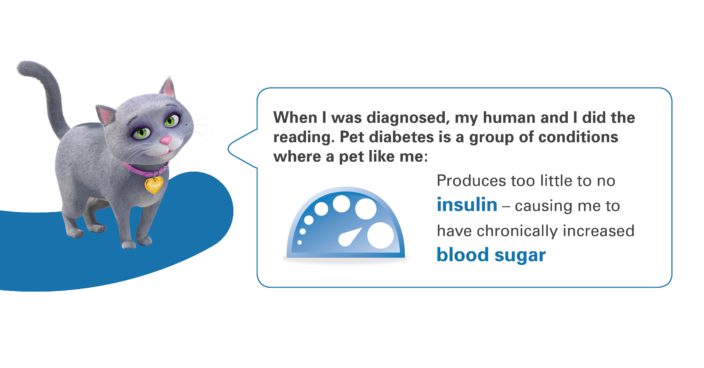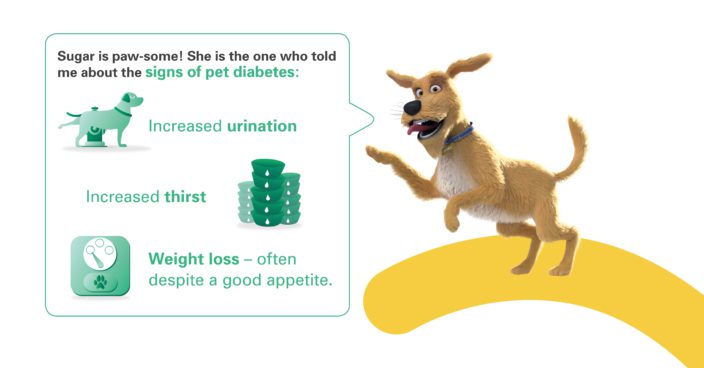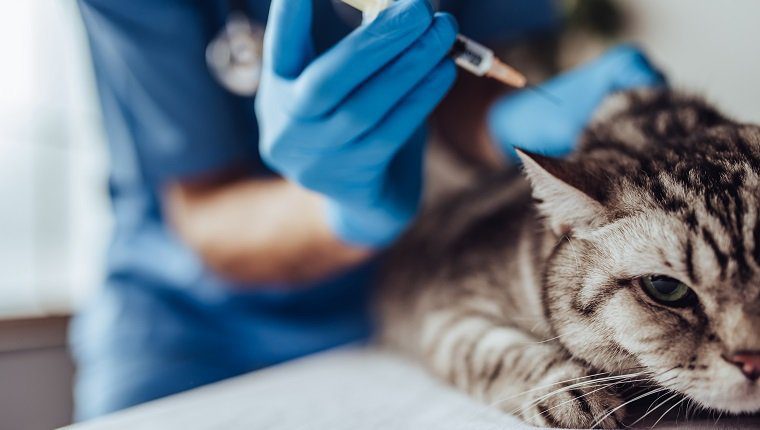Ciara McGarvey
Veterinary Surgeon
November is Pet Diabetes Awareness Month.
Diabetes Mellitus (or Diabetes) is a condition whereby an animal either:
(1) cannot produce insulin in their own body (most common form)
or
(2) they cannot respond to the insulin their body is producing (due to a condition such as Cushing’s syndrome).

This means that when your pet eats their food and it is broken down in their body, they cannot absorb it properly to use it for energy. This results in high blood sugar levels and low energy levels. The high blood sugar levels can make your pet feel nauseous and can have harmful effects on their other organs. The most common signs that owners often notice are weight loss despite an increased or normal appetite, increased urination, and increased drinking and cloudiness of the eyes.

If we suspect your pet has diabetes mellitus there are a series of tests we can perform to confirm this diagnosis- these include a simple blood glucose check, urinalysis, and occasionally a biochemistry profile to assess liver and kidney function as well as blood glucose. We also provide fructosamine blood sampling which allows us to measure the 2-3 week average of your pet’s blood glucose. These tests can help determine if your pet is suffering from Diabetes Mellitus.
The good news is that this is a treatable condition, although it does require commitment and regular monitoring to manage and to keep their blood glucose levels stable.
Initially, we will treat your pet as a regular diabetic (i.e. one who simply cannot produce insulin). If they fail to respond well to our treatment we can then investigate for causes of insulin resistance such as Cushing’s syndrome ( a syndrome where their body produces too much steroid).
Your pet will need regular checkups and daytime stays for the first few weeks. During these day stays we will carry out a glucose curve, where we can monitor your pet’s response to the dose of insulin given. We will take numerous blood glucose readings throughout the day, recording the ‘nadir’ point i.e the point in the day when the blood glucose is in the normal blood glucose range, this allows us to make more accurate dose adjustments.
Once they are stable we will need fewer checkups.
We are going to start treatment by deciding on a set amount of food to feed your pet every day. Royal Canin Diabetic food is a low GI food and is recommended for diabetic patients. You can add a small amount of “tasty” food such as tuna or a quarter of a sachet of wet food to each meal to encourage your pet to eat it.
The most important thing is consistency. Feed the SAME thing at the SAME time twice daily, ideally 12 hours apart i.e. 8 am and 8 pm.
Directly after feeding insulin must be given. This means insulin is given twice a day.
Guidelines re insulin administration:
1) Keep the insulin bottle in the cardboard packaging, in the fridge.
2) Gently invert the bottle 4-5 times before use.
3) Draw up the correct amount of insulin as directed.
4) Inject AFTER feeding. Give the full amount of insulin if your pet has eaten half or more of their meal. Give half the dose of insulin if they eat less than half or none of her meal.
NO SNACKS can be given during the day.
If your pet is not eating at home they may need to be hospitalised for treatment.
If your pet appears to have LOW blood sugars (weakness or tremors) you can administer honey orally or something else sweet (e.g. digestive biscuit) to bring their sugars back up. This may occur if they have exercised a lot that day or if they have not eaten and have been given insulin.
If you are concerned about your pet, give us a call on 061314203.
For the whole month of November, Rockhall is offering a free Diabetes Urine screen.

